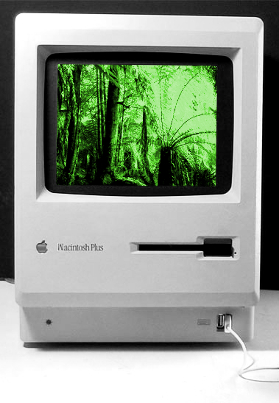Collaboration lends weight to vegetation count
 New ways to assess vegetation in natural ecosystems around Australia is being made possible, by a research project combining computer vision and environmental science.
New ways to assess vegetation in natural ecosystems around Australia is being made possible, by a research project combining computer vision and environmental science.
University of Adelaide researchers are developing a method to automatically determine the biomass (total amount of plant material), by analysing of a set of panoramic photographs.
Images were taken at 300 sites around the country in a variety of ecosystems to establish a baseline measure of the condition of Australia's natural vegetation, as part of the AusPlots surveillance monitoring program.
Research Associate Dr Ben Ward has used computer vision and machine learning techniques to estimate the cross-section of each tree photographed at a standard height of 1.3 metres (the baseline area measurement).
Machine learning is a type of artificial intelligence involving pattern recognition of data.
“Our system analyses a set of three 360 degree panoramas from the centre of a site and then processes the images to produce a 3D reconstruction,” Dr Ward said.
“From that, the system automatically detects individual trees, estimates the diameter at 1.3 metre up the tree trunk and puts them all together for an overall estimate of the biomass of the site.
“This is a much more efficient method of biomass estimation than the standard method of direct measurement, which is very labour intensive, using laser readings which is very accurate but expensive, or other rapid measures which only provide crude estimates. The field method is quick and simple, and requires minimal training.”
The academic team is working with experts from AusPlots, an ongoing nationwide plot-based surveillance monitoring program.
Ecologist and AusPlots Director Ben Sparrow says continual measurements will give a better glimpse into the future.
“We need to be able to establish a baseline of the current state of ecosystems to be able to measure environmental change,” says Mr Sparrow.
“This system is allowing us to take a snapshot of Australia's natural vegetation in an efficient manner that can be reproduced easily to see how quickly things are moving.
“By bringing together a computer scientist and an ecologist to work collaboratively, we've been able to produce an automated process for environmental measurement to help us manage and protect our natural environment,” he said.
More information can be found at the AusPlots website.







 Print
Print